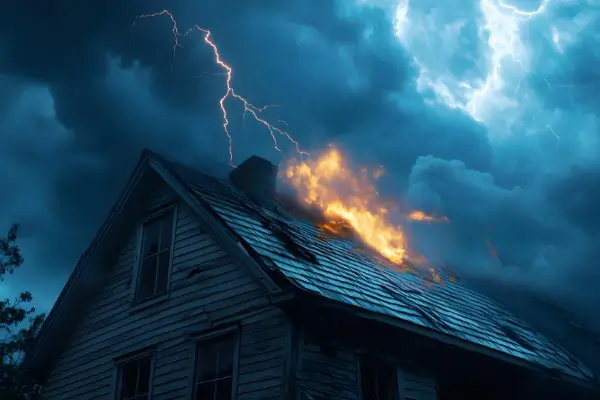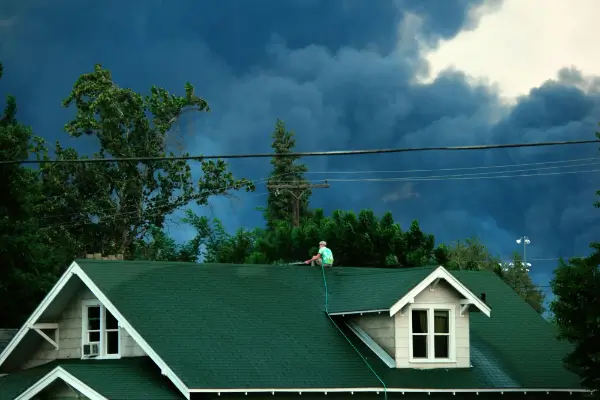Why DIY Lightning Protection Is Risky — And Not Worth the Gamble
Every year, thousands of homes across the United States are struck by lightning, resulting in fires, structural damage, and costly repairs. With powerful storms frequently hitting regions like Louisiana, Gulfport, Mobile, Gulf Shores, Hattiesburg, Memphis, Little Rock, Jonesboro, Beaumont, Montgomery, Rapid City, and Pensacola, homeowners often search for ways to protect their property. While do-it-yourself lightning protection kits may seem like a budget-friendly option, the truth is that DIY lightning protection can be dangerous, ineffective, and not worth the risk.
At Strike Safe Lightning Protection, we’ve spent generations perfecting safe, code-compliant systems designed to protect homes, farms, and commercial buildings. Here’s why lightning protection is a job that should always be left to professionals.

-
DIY Systems Rarely Meet Safety Standards
A properly installed lightning protection system isn’t as simple as placing a few rods on the roof. It must meet strict national safety codes, including the NFPA 780 standards for installation and grounding. These guidelines dictate everything from the placement of air terminals to the type and size of conductors and how they are bonded to the structure.
DIY kits often skip these crucial details, which can leave your system incomplete or ineffective. A system that doesn’t meet code not only fails to provide protection — it may also increase the risk of fire or electrical discharge.

-
Hidden Structural and Safety Risks
When a lightning protection system is installed incorrectly, the results can be worse than having no protection at all. Poorly attached conductors can damage roofing materials, create leaks, or even weaken your structure. If grounding is done improperly, lightning energy may travel through plumbing, electrical wiring, or metal framing — putting everyone inside the home at risk.
Certified installers understand how to route conductors safely and discreetly, ensuring your roof, structure, and interior remain unharmed while providing full protection.
-
False Sense of Security
One of the most dangerous aspects of a DIY lightning protection system is the false confidence it provides. Homeowners may believe their property is protected, only to find out the hard way that the system doesn’t function properly. During a storm, that false sense of security can lead to devastating consequences. Professional systems are tested, inspected, and designed to work precisely when it matters most.
-
Poor Quality Materials and Lack of Expertise
True lightning protection components are built to withstand massive electrical energy. Strike Safe Lightning Protection uses UL-listed materials — including copper or aluminum conductors, heavy-duty fasteners, and corrosion-resistant ground rods — to ensure long-term performance.
In contrast, most DIY kits use cheaper, non-certified materials that may corrode or melt under extreme voltage. This can cause system failure or spark fires. Certified materials are tested for conductivity, strength, and durability — something most consumer products cannot match.
-
Liability and Insurance Issues
Homeowners insurance policies may not recognize DIY lightning protection systems. If a lightning strike damages your home and an inspection reveals that your system was improperly installed or non-compliant, coverage may be denied. Professional installation ensures your system meets industry standards and can be certified for insurance and inspection purposes.
-
Regional Conditions Demand Professional Expertise
Lightning behaves differently depending on geography, soil type, and climate. The Gulf Coast, for instance, experiences some of the highest lightning strike frequencies in the country. Grounding a system in sandy coastal soil requires a completely different approach than grounding one in rocky or clay-rich areas.
At Strike Safe Lightning Protection, our team understands these regional factors and designs each system to perform safely in your local environment — whether you live in humid Louisiana, along the Alabama coast, or in elevated terrain like Rapid City.
-
Professional Protection Is Affordable and Long-Lasting
Many homeowners assume professional installation is costly, but the opposite is often true. A professionally designed and installed lightning protection system is an investment that lasts for decades with little to no maintenance. It’s a permanent safety feature that protects your family, property, and peace of mind.

Trust the Experts at Strike Safe Lightning Protection
For generations, Strike Safe Lightning Protection has been designing and installing lightning protection systems for homes, barns, and businesses across the Gulf South and beyond. We offer affordable, certified installations that meet all safety standards and deliver proven protection when storms strike.
Serving Louisiana, Mississippi, Alabama, Tennessee, Arkansas, Texas, South Dakota, and Florida, we combine craftsmanship, compliance, and care in every project. Don’t take chances with DIY solutions — trust the experts who know how to keep your property safe from one of nature’s most powerful forces.
About Strike Safe Lightning Protection
At Strike Safe Lightning Protection, we’ve been installing reliable lightning protection rods for generations, earning a trusted reputation for quality craftsmanship and affordable pricing. Our team provides nationwide service, with a strong focus on the Gulf and Southern regions—including Louisiana, Gulfport, Mobile, Gulf Shores, Hattiesburg, Memphis, Little Rock, Jonesboro, Beaumont, Montgomery, Rapid City, Austin, Texas and Pensacola. Whether it’s a residential home, farm, or commercial property, Strike Safe delivers proven lightning safety solutions designed to protect what matters most.
